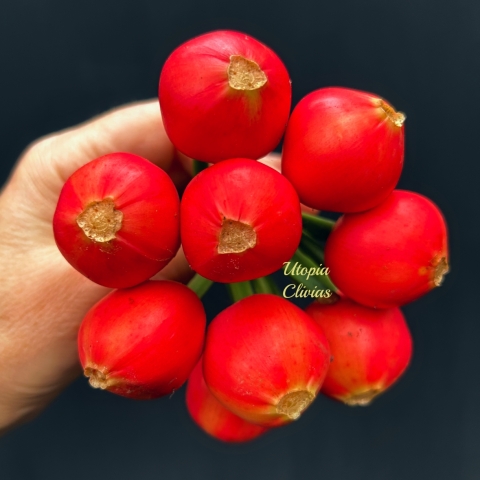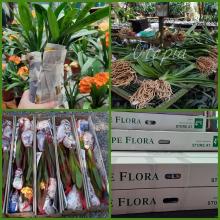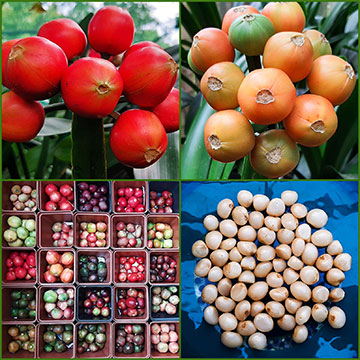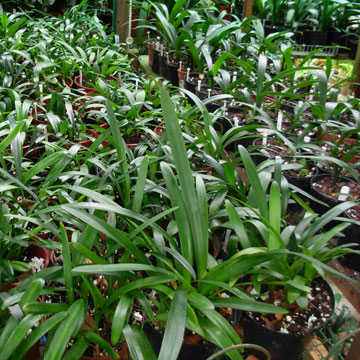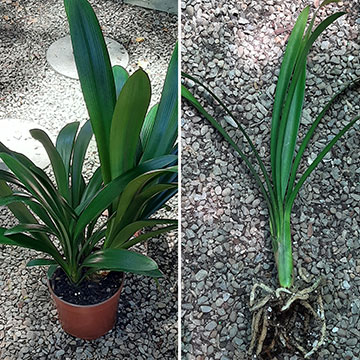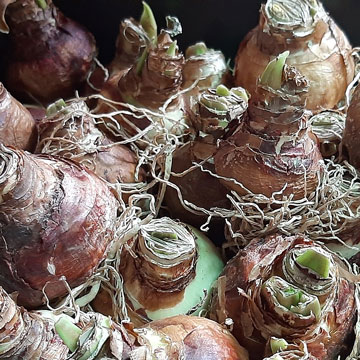- For successful germination you have to sow the seed when it is still fresh.
- Pick the berries when they have started colouring up and are soft to the touch.
- Use your thumbs to break open the berries and remove the pulp and membranes covering the large seeds, which will have a pearly sheen.
- Make sure to clean up the flesh, skin, and membrane surrounding the seeds inside.
- Once the seeds are cleaned, wash the seeds with a soluble fungicide or a weak solution of dishwasher liquid and water. We add a drop of Sporekill for extra safety. Make sure to remove any remaining skin and let them dry on a paper towel.
- Prepare your growing mixture with equal parts palm or coco peat and perlite. Mix in some water with fungicide to dampen the soil as well.
- Fill seedling dishes with your super mix and pat the surface. We use 2l Ice cream containers as their lids fit tightly.
- Plant the clivia seeds with the eye part facing down. Space seeds about 2,5 cm apart with the tops of the seeds still exposed. When planting clivia seeds do not press them all the way down into the soil.
- Water well with a weak fungicide solution to prevent any rot or damping off.
- Ensure the soil remains moist at all times
- After about 4 – 6 weeks the seed should start sprouting and you will see small roots emerging.
- Fill up small pots or a large, deep tray with commercial seedling mix or fine bark. We like to add some of the original seed mixture to this soil as well. Water it well and allow it to drain.
- Make small holes about 2cm deep in the growth medium using a dibber or stick. Plant the sprouted seeds gently into the holes without damaging the roots. The seed part should be halfway into the soil.
- Place the seedlings in a warm, shady spot and water about twice a week with a soft spray. (Keep an eye on the weather. If it is very hot you might have to water more often, as the soil must not be allowed to completely dry out.) Don’t overwater.
- As the small plants grow, feed them regularly with a seaweed-based growth stimulator like Kelpak. Applying a water-soluble fungicide now and again can also be of benefit, preventing root rot.
- The seedlings are slow growing and should remain in the little pots or tray for about two years to become strong before being transplanted.
- Clivias grown from seed can take three or, more likely, five years before flowering, but they are worth the wait!
Article category
